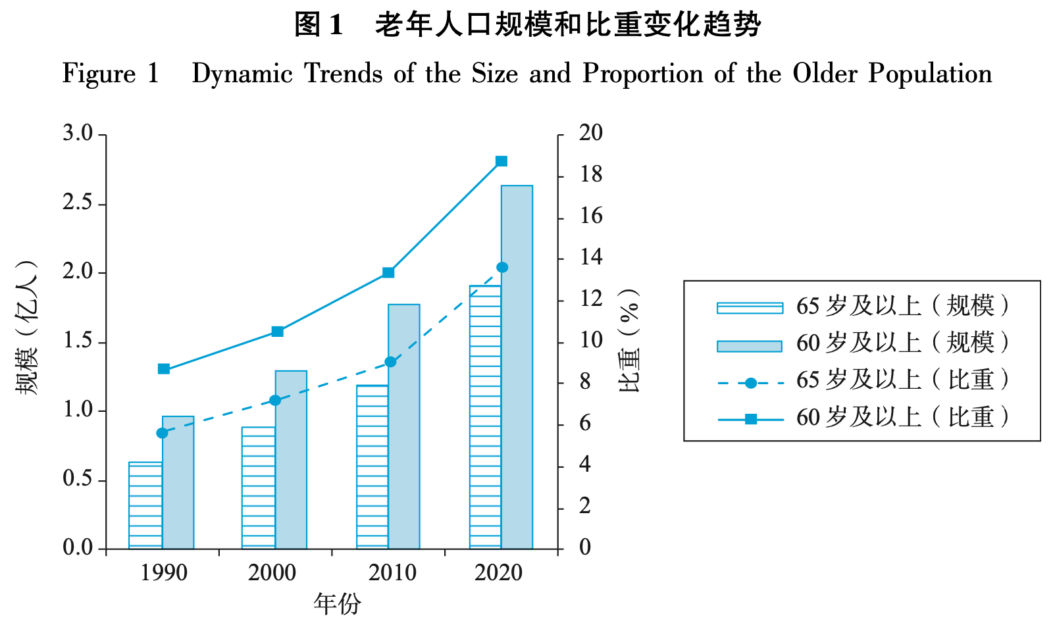Abstract
Based on the 7th National Population Census conducted in 2020 and previous censuses, this study analyzes the current situation and the dynamic trend of China’s population ageing. This study first describes the health status, sources of livelihood, living arrangement, and marital status of the older population in general, and summarizes the characteristics of China’s population ageing: The speed and depth of China’s ageing process have been further strengthened, and the proportion of the elderly population in rural areas becomes higher. From 2010 to 2020, the self-assessed health status of the older people has improved, yet the gap between urban and rural areas is still significant; the proportion of widowed persons among the older people has declined, and the relative proportion of widowed persons is higher in rural areas and among women than their counterparts; the elderly security system is further improved, and the older people are more economically independent with less economic pressure; the phenomenon of “empty nest” is common among rural older people; and those who are unhealthy or living alone are more likely to rely on assistance from the government.
摘要
基于 2020 年第七次全国人口普查数据,结合第四、五、六次全国人口普查数据,对中国人口老龄化的现状和发展趋势进行分析,详细描述老年人口健康状况、婚姻状况、生活来源、居住状况等方面的变化,并总结现阶段中国老年人口的新特征。 研究发现,中国老年人口规模和比重总体呈上升趋势,且人口老龄化速度进一步加快,高龄化趋势日益凸显,农村老年人比重高于城镇。 相比于2010 年,2020 年老年人自评健康状况有所改善、但城乡差距依然较大;老年人丧偶比重有所下降,农村老年人和女性老年人的丧偶比重相对较高;养老保障体系进一步完善、老年人在经济上独立性更强、压力更小;农村“空巢老人”现象普遍;自评不健康、独居老年人生活更依靠政府托底。
Resources
- Yang, Hanmo. 2022. “中国人口老龄化新趋势及老年人口新特征 (Dynamic trend of China’s population ageing and new characteristics of the elderly).” 人口研究 (Population Research) 46(5), 104–116. Article Link.

